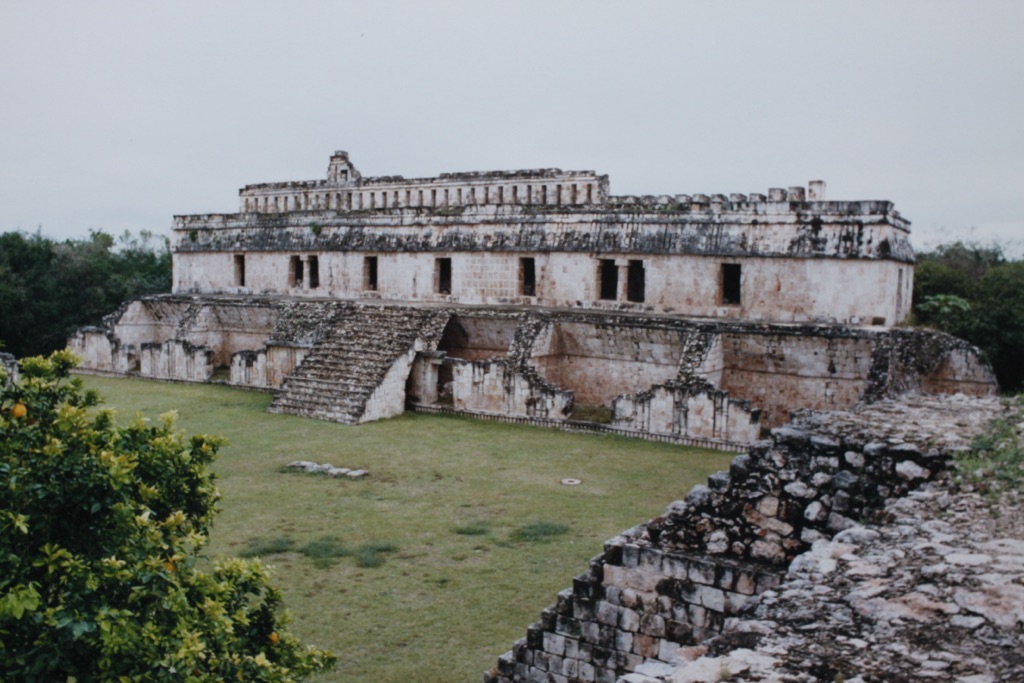Kabah, known for its exquisite architecture, is a significant archaeological site located in the Puuc region of the Yucatán Peninsula in Mexico. It flourished as a center of Mayan civilization and is renowned for its elaborate ceremonial structures. Kabah is part of a string of Puuc cities, which also includes Uxmal, Sayil, and Labná. It is famous for the Palace of the Masks, a temple adorned with hundreds of stone masks of the rain god Chaac. This site provides valuable insights into the Mayan culture and its architectural prowess.
Get your dose of History via Email
Historical Background of Kabah
Archaeologists discovered Kabah in the mid-19th century. John Lloyd Stephens and Frederick Catherwood were among the first to document it in 1843. The Maya built Kabah during the Classic period, with most structures dating from the 7th to the 11th centuries AD. Later, the site was inhabited by the Xiu family, a prominent Maya lineage. Kabah was a key player in regional politics and had strong ties with Uxmal. It witnessed significant events, including the rise and fall of Mayan city-states.
The city’s name, Kabah, may derive from the Mayan word for “strong hand,” a fitting moniker for a place of such importance. The site was a religious, economic, and political hub. It was home to a large population and boasted an intricate network of sacbeob, or white roads, connecting it to other cities. Kabah’s decline is not well-documented, but it likely occurred as part of the general decline of the Puuc region’s cities.
Excavations at Kabah have been ongoing since the late 19th century. The site has yielded numerous artifacts, including pottery, tools, and ornaments. These discoveries have helped piece together the life and customs of the Maya who lived there. Kabah’s architecture also provides clues to its historical significance. The elaborate facades and grandeur of its buildings reflect a time of prosperity and cultural achievement.
Despite its discovery, much of Kabah remains unexcavated. The dense jungle that once hid it still covers large parts of the site. This has preserved Kabah in a relatively untouched state, offering a unique glimpse into the past. The site’s remoteness and the sheer scale of unexplored areas hold the promise of future discoveries that could further illuminate Mayan history.
Kabah was not just a standalone city; it was part of a larger network of Mayan sites. Its history is intertwined with that of its neighbors, and its story is a chapter in the broader narrative of Mayan civilization. The site’s significance extends beyond its borders, contributing to our understanding of the Maya and their enduring legacy.
About Kabah
Kabah is renowned for its distinctive Puuc architecture, characterized by intricate stone mosaics and elaborate geometric patterns. The most famous structure is the Palace of the Masks, or Codz Poop, adorned with hundreds of masks representing the rain god Chaac. This temple is a testament to the importance of rain in the Mayan agricultural society.
The site’s buildings were constructed using finely cut stones, which were fitted together without mortar. The Maya used a corbel arch technique to create passageways and doorways. This method was common in Mayan architecture and is a hallmark of their engineering skills. The buildings at Kabah are also noted for their elaborate facades and detailed carvings.
One of the key materials used in the construction of Kabah was limestone, abundant in the region. The Maya quarried the stone locally and then transported it to the site. They also used stucco to create smooth surfaces for carvings and decorations. The use of color was another aspect of Kabah’s architecture, with remnants of red, blue, and yellow pigments found on some buildings.
Architectural highlights of Kabah include the Arch, which marks the entrance to the city and is part of an ancient sacbe that connects Kabah to Uxmal. Another significant structure is the Temple of the Columns, featuring rows of pillars and a large central altar. The site also contains several palaces, each with its own unique design and purpose.
The layout of Kabah suggests it was a well-planned city with residential, administrative, and ceremonial areas. The central precinct housed the most important religious and political buildings, while the outskirts likely contained the homes of the common people. The city’s design reflects the social and hierarchical structure of Mayan society.
Theories and Interpretations
Several theories exist about the use and significance of Kabah. The prominence of Chaac masks suggests that the site had a strong religious function, particularly in worship related to agriculture and rain. Some scholars believe Kabah may have been a pilgrimage site, drawing worshippers from across the region.
There are mysteries surrounding Kabah, such as the meaning behind certain carvings and hieroglyphs. While some inscriptions have been deciphered, others remain a puzzle. These enigmatic elements fuel speculation and research, as historians and archaeologists strive to understand the Maya’s messages.
Interpretations of Kabah’s role in the Mayan world have evolved over time. Initially thought to be a secondary city, it is now considered a major political and economic center. This shift in understanding shows the dynamic nature of archaeological interpretation.
Dating of Kabah’s structures has been carried out using methods such as ceramic typology and radiocarbon dating. These techniques have helped establish a timeline for the construction and occupation of the site. However, the exact chronology remains a subject of ongoing research and debate.
Theories about Kabah also extend to its decline. Some suggest that environmental changes, such as drought, played a role. Others point to internal social upheaval or external pressures. The true cause is likely a combination of factors, reflecting the complexity of Mayan civilization.
At a glance
Country: Mexico
Civilization: Maya
Age: 7th to 11th centuries AD
Conclusion and Sources
Reputable sources used in creating this article include:

